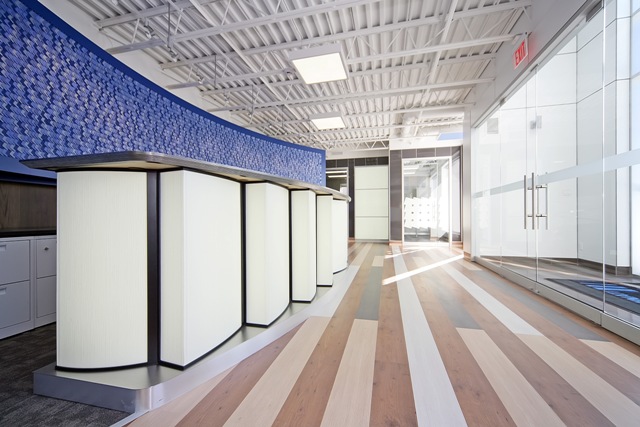Ventilation in Schools
Pupils’ concentration and learning is better in well ventilated classrooms. On-demand ventilation with energy recovery offers a far more energy efficient solution compared to natural ventilation in schools, as Nygel Humphrey explains.
Air Quality has a direct impact on learning. CIBSE recommends a CO2 concentration of no more than 900 parts per million (ppm) to achieve a medium quality of air. CO2 levels in UK schools have frequently been measured far in excess of these levels. Higher levels of CO2 reduced the attention span of students, adversely affecting their learning ability.
Building Bulletin 101 provides the regulatory framework for the adequate provision of ventilation in schools and the design of school buildings to meet the ventilation requirements of both The School Premises Regulations and the Building Regulations Part F (Ventilation). It specifies limiting CO2 levels within teaching and learning spaces to 1500 ppm. However, research from Reading University and University College London in 2009 revealed that new energy efficient schools designed to be more airtight to reduce heat loss, were as a result featuring ventilation rates with CO2 levels exceeding targets. Building Bulletin 101 also requires natural ventilation in schools to achieve an air flow rate daily average of 5 l/s per child, a minimum level of 3 l/s and a maximum capability of 8 l/s with teacher intervention. The inclusion of a minimum level (no minimum level is specified for mechanically ventilated schools) is a tacit admission that natural ventilation struggles to achieve the daily average and maximum capability levels required. Being able to achieve just the minimum air flow rate level under Building Bulletin 101 will only lead to air quality issues down the line in the classroom.
|
|
Because there is no capability to recover heat or coolth in a naturally ventilated school, energy is needed to provide top-up heating to the fresh air brought into the building in winter or it is simply exhausted to outside when it could be put to other uses in summer.
In contrast, mechanical demand ventilation with energy recovery is the comprehensive air quality answer for schools. Demand ventilation works by responding to the exact ventilation demands of a room, supplying or extracting air only when and to the level it is required. The system is activated according to sophisticated control and sensing options, with no teacher intervention required. Sensors communicate with the main unit which, in turn, drives the fan to the required speed to deliver the airflow and respond exactly to classroom conditions.
The latest on-demand ventilation systems such as Sentinel Totus Demand Energy Recovery Ventilation (D-ERV), integrate 90 percent energy recovery into the ventilation system. This type of system extracts the energy from the warm, stale air taken from classroom areas before it is exhausted to outside whilst fresh, incoming air is preheated via the high efficiency plate heat exchanger and supplied into the classroom. The energy recovery process is proven to utilise up to 94 percent of the heat energy which would otherwise be wasted to outside.
An automatic summer bypass takes advantage of any free cooling available when the ambient temperature is below the room design condition, typical in Spring and Autumn. The TOTUS system also incorporates interlocks for associated heating and cooling equipment installed to optimise energy recovery potential and eliminate any possibilities of systems conflict. A night-time purge facility takes heat from the room overnight in the summer to reduce start up temperature/loads and help cut over heat from non air conditioned spaces.
Comparative studies based on an outside ambient of -4C and a desired room temperate of 18C, an air flow rate of 5l/s per child show that it will ensure that CO2 levels will not exceed 1500ppm. However, if natural ventilation is used, the result will be a total energy lost to ventilation of 4.04 kW/hr per classroom whereas the equivalent figure for demand ventilation with energy recovery will be just 0.83 kW/h. And that’s with the fans running on the mechanical system!
On a recent project in Scotland, we are retrofitting demand ventilation with energy recovery where natural ventilation previously existed. The TOTUS system is reducing energy demand so significantly that the original requirement for a parallel upgrade of the school’s boiler systems has been cancelled, helping to cut the time and cost of installation as well as the carbon footprint of the school.
Nygel Humphrey, Product Marketing Manager — Non-Residential at Vent-Axia.





